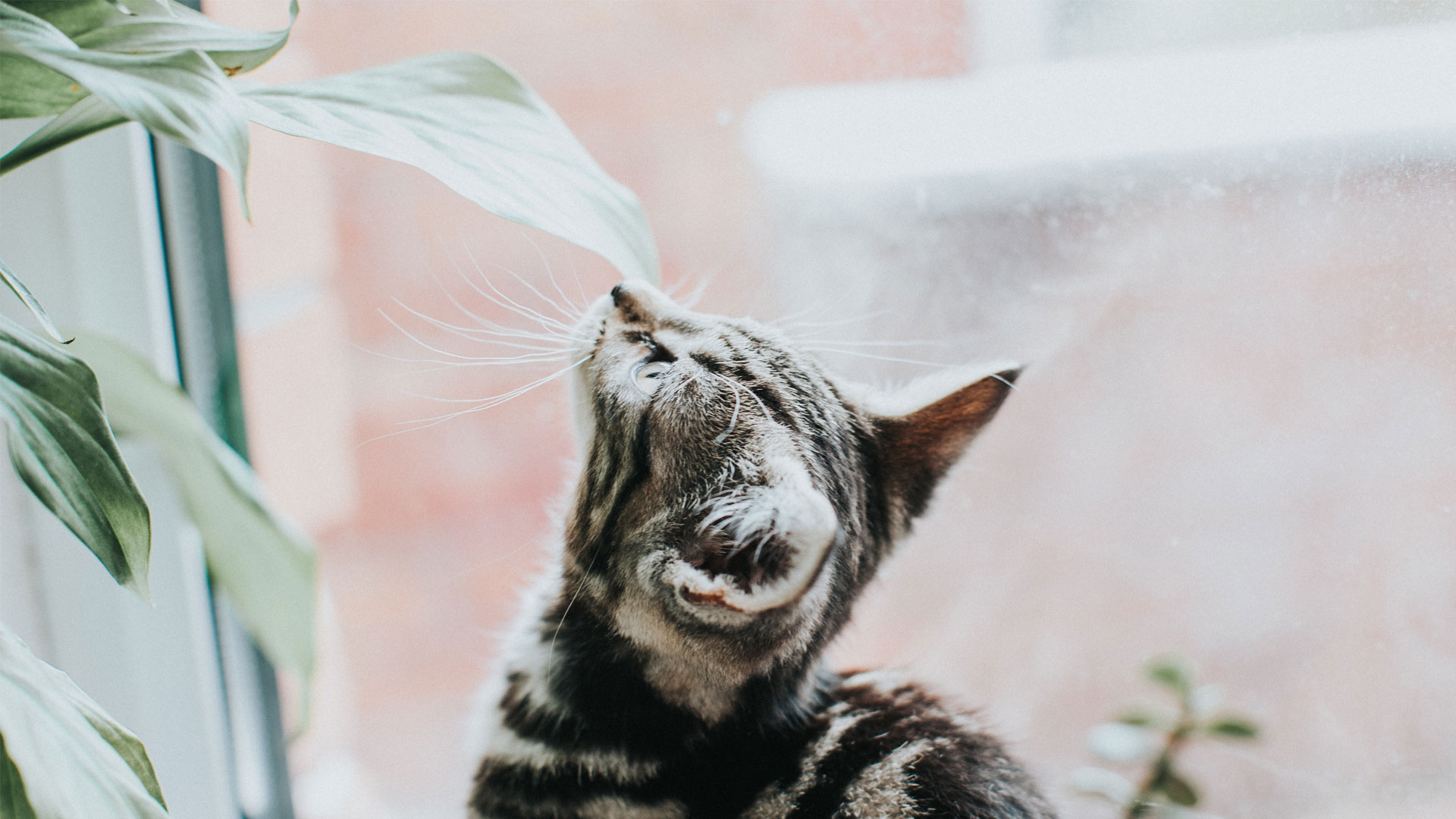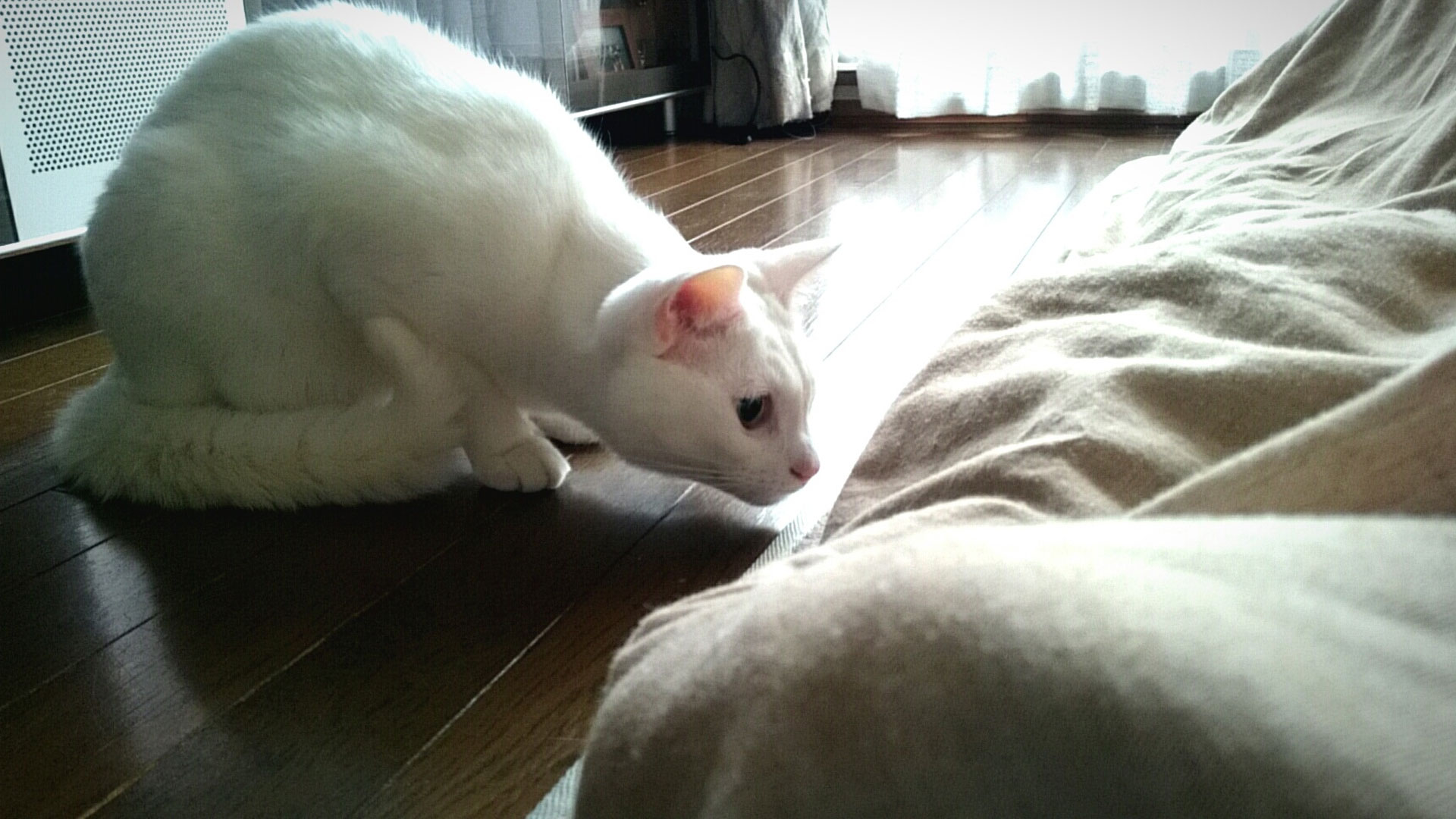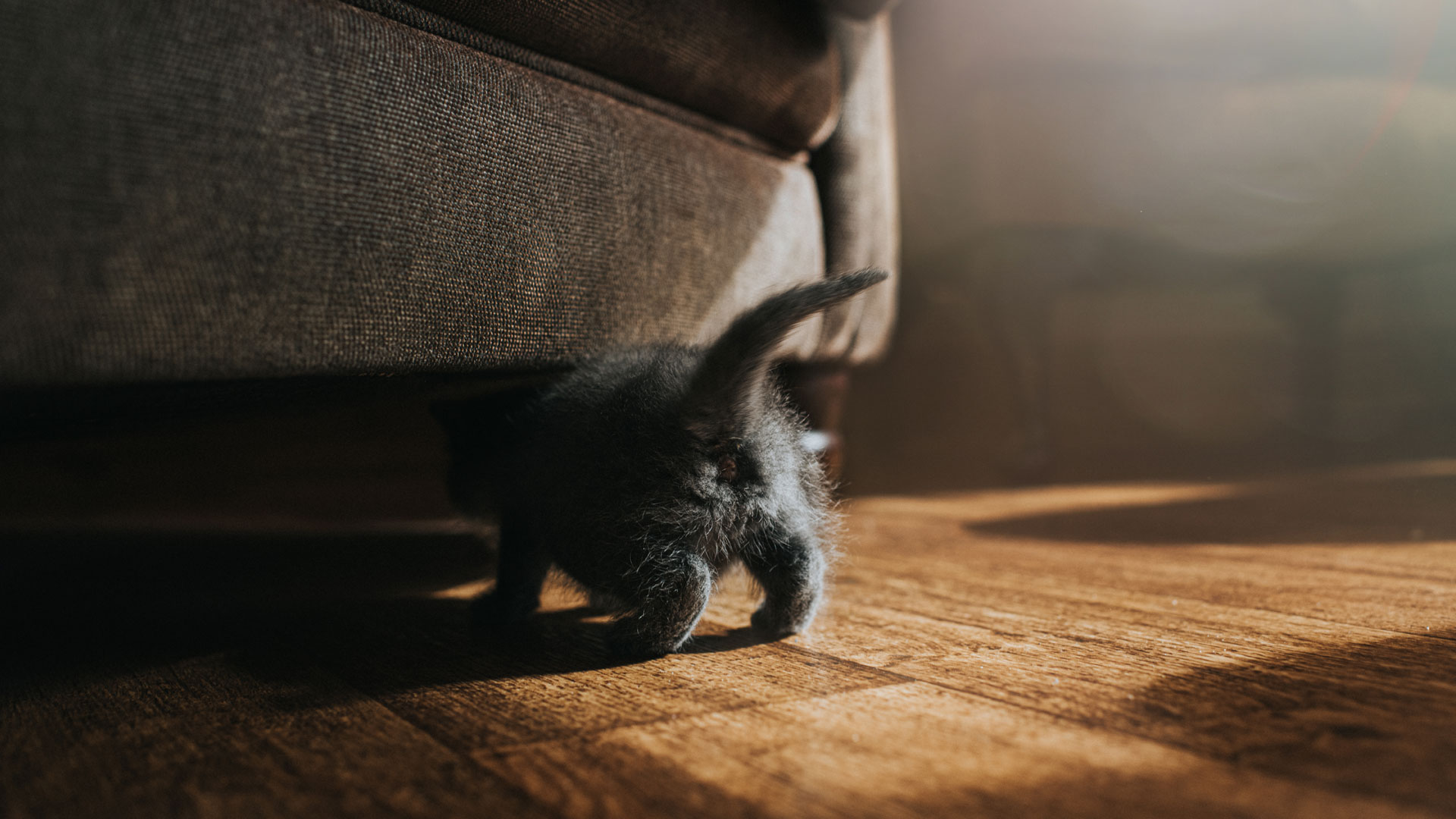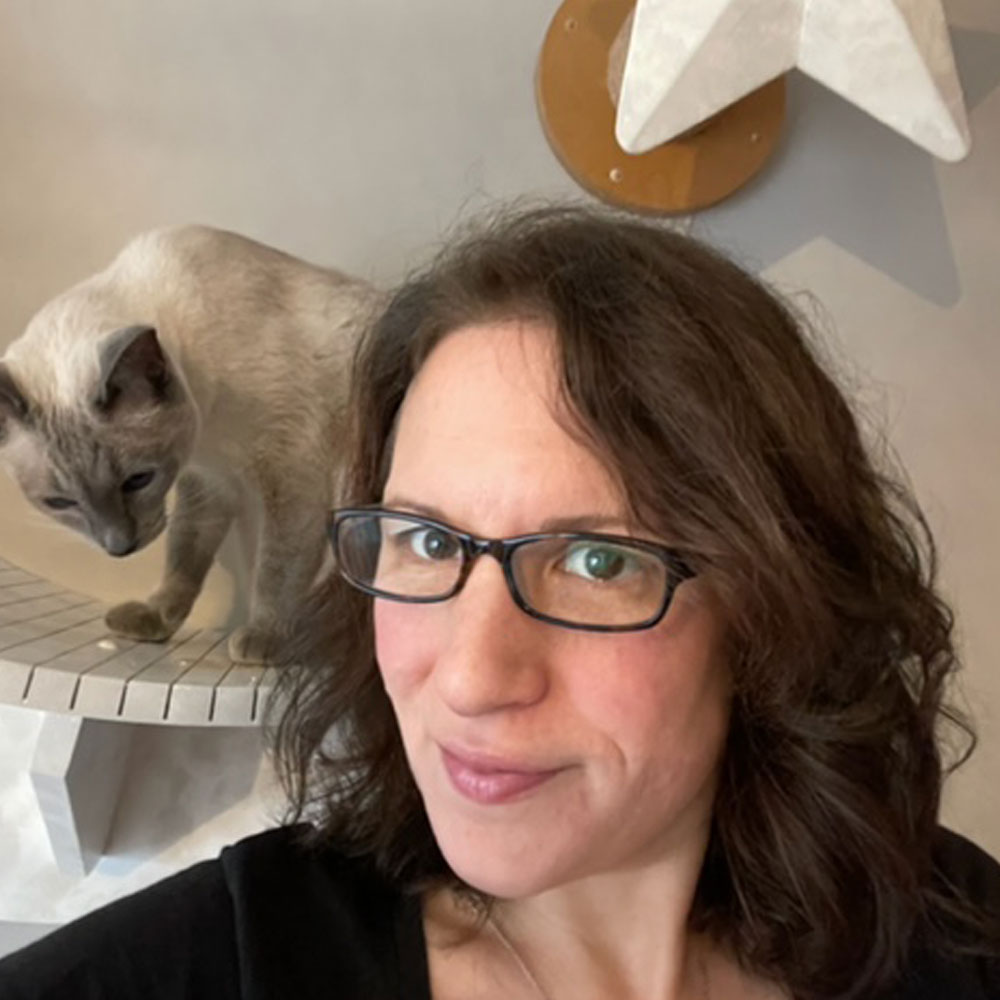I tried ‘nosework’ with my cats and it’s transformed our bond
Cats are born to hunt, so how can you stimulate indoor cats to express their natural predatory behaviors?

Even well-fed cats have an instinctive need to hunt. While my six cats have free access to an outdoor catio, the only prey they encounter is the odd house fly or moth that flits through the wire mesh. According to global cat welfare charity International Cat Care, a predictable and monotonous indoor environment can prevent cats from engaging in natural behaviors like seeking out prey. This can cause boredom and frustration, which has a negative impact on their emotional wellbeing and may result in them displaying undesirable behaviors, such as aggression towards people or other cats, toileting outside the litter tray, spraying, or destructive behavior.
Two of my cats, Sula and Ylva, are former ferals and as kittens they lived on a diet of rats and birds, so they chatter and bang against the windows or sides of the catio when they spot pigeons and magpies in the garden. Teddy and Maine Coon, Horatio, also have high prey drives and if they aren't given an appropriate predatory outlet, they will stalk and leap on the other cats. Bimble and Siamese, Daisy Mae, have lower prey drives, but Daisy Mae needs lots of mental stimulation, as if she’s bored or doesn’t have access to what she wants, she will meow for attention, knock items off shelves, or tear things up.
I regularly engage the cats in predatory play using the best interactive cat toys and put their food in puzzle feeders to encourage them to express part of their natural predatory sequence (seek, stalk, chase, pounce, catch, and manipulate), but in my search to provide them with even more environmental enrichment and opportunities to satisfy their predatory seeking instincts, I signed up to take an online class with Nosework Cats, created by Hanna Fushihara, a CPDT-KA certified trainer. Here’s how it went.

Hanna Fushihara CPDT-KA lives in New York’s Hudson Valley region and runs Nosework Cats as well as Hot Fuzz Dog Training. She has been permanent and temporary staff to many cats both that she has called her own and many that she helped through TNR (trap, neuter, return). She started teaching canine nosework in 2018 and reached the NW3-Elite title level competing with her pit bull Derek before he passed away. Hanna started developing her own ideas on how to play nosework with her cats in the spring of 2020 during the start of the pandemic, making adjustments to how she knew how to play nosework with dogs so that her cats would find the activity fun, challenging, and motivating. She’s been adding her imaginative, artful skills and humor to the mix with Nosework Cats to make it unique and her own.
What is nosework for cats?
If you’ve heard of nosework, you probably associate it with dogs. It was originally developed as a canine sport inspired by the scent detection work carried out by police and border force detector dogs, but pioneering trainers like Hanna have adapted it for cats.
So how does nosework work? Hanna says, “The simplest answer is, we use something that the animal is motivated to attain (which can be trained or naturally motivated) and place/hide it in an environment for them to find using their sense of smell. We make the steps to attain it incrementally more difficult to build up the animal’s skill in navigating to the “hide/s” using their nose.”
I asked her whether any species-specific adaptations are necessary when working with cats. She explained, “For me, when I talk about nosework with cats, I am generally referring to how I have chosen to play with my cats and how I currently teach it, which is that the cats are finding some kind of food and eating it when they find it and that the human is hands-off except for setting up the searches. Typically when people refer to nosework for dogs, they are generally talking about the goal being the dog finding a non-food “target” and the human delivering the food (or toy) reward. The biggest difference that I personally see in my own training is that my cats are allowed to jump on tables and shelves, so I can think about using hide locations that I might not use in the same way as with a dog.”
According to Hanna, nosework has many benefits for cats and their caregivers, “It’s an opportunity to “see” the world through their experience. Their sense of smell is much stronger than ours so they are showing us through their actions what’s happening in the environment. It’s fascinating to watch an animal problem-solve the location of a hide. And for them, I think it’s fun and a bonding experience because we do it together.”
Get the best advice, tips and top tech for your beloved Pets

Getting started with nosework
As my cats are used to working to obtain food from puzzle feeders, I was confident they’d be keen to try nosework. Sure enough, all of them were enthusiastic participants and quick to master the initial exercises, for example locating food placed in one of three bowls laid out on the floor. Over the next few sessions, I slowly increased the challenge by adding more bowls, hiding them inside boxes, or elevating them off the floor. It was fascinating watching the cats explore the environment, using their sensitive noses to gather information and follow the scent trail, just as they would when tracking down a mouse hiding in the undergrowth. Sula and Ylva were a little tentative when I first introduced the boxes. As former ferals, they are often unsure when encountering unfamiliar objects, so to prevent them from experiencing any anxiety, I ensured that they always had choice and control, allowing them to investigate the boxes and begin the search in their own time.
As cats are solitary hunters, I worked with each cat individually to prevent any competition, which could cause stress. It was interesting to see their different approaches to nosework, with Horatio (who at four years old is the youngest of the group) rushing around excitedly, tail up, while the others took a calmer, more methodical approach to the search. Teddy was particularly quick to track down the hidden treats. He’s deaf, so it’s possible that his sense of smell is heightened. Bimble has mild cerebellar hypoplasia, which affects his mobility and fine motor skills, but I found that as long as I was careful not to place the hide in a location that was too difficult for him to navigate to or access, he was just as capable of problem-solving to find the target as the other cats. As Hanna says, “The beauty with nosework is the wide range of possibilities. We can adapt it to just about any physical ability or skill level.”
I loved watching the cats grow in confidence as they tackled each new set-up and the experience strengthened our bond"
I loved watching the cats grow in confidence as they tackled each new set-up and the experience strengthened our bond, as although I was hands-off during their searches, they recognized that I facilitated the sessions and associated me with the rewarding experience of successfully locating treats. With new opportunities to engage in predatory-seeking behavior and the increased mental stimulation nosework has provided, there have been very few incidences of undesirable behaviors from any of the cats. Nosework has also significantly boosted their daily physical activity, helping them to maintain a healthy weight and improve their overall fitness.

Troubleshooting and increasing the challenge of nosework
As we progressed through the class, it became clear that Horatio was looking for the hidden treats rather than sniffing them out. Researchers at the University of Lincoln have found that individual cats have different preferences for using sight or smell when seeking out food, but as I was keen to encourage him to use his nose, I moved on to a more advanced exercise, using strips of paper to create a visual barrier across the front of the boxes (Hanna calls these “mystery boxes”). With the target now obscured from sight and reduced airflow trapping some of the odor, Horatio immediately started roaming around the room, sniffing the air. The moment that he intersected the scent trail, he stood still for a moment, as if contemplating the sensory information, then headed straight for the hide to claim his prize.
While working with one of my other cats, Daisy Mae, I was too quick to raise the criteria and when she struggled to locate the target she got frustrated, her tail beginning to twitch, so I quickly placed another treat in an easy-to-find location to ensure that the search ended on a high note. Hanna tells me, “Creating an appropriate level task is necessary, and if we’ve misjudged the situation (which can happen easily), knowing when to stop and reset is also key. Each cat will have a different level of tenacity for problem-solving but it’s also something that can be grown.” She reassures me that, “It can be hard to tell, especially with cats, when we should wait a little longer or when to call off the search and reset it to make it easier but that’s where our observation skills and getting to know our cats comes into play.”
I now feel more confident to judge when to move on to more difficult odor-only searches which dispense with the container (for example, sticking a treat onto a piece of furniture) and games that add mild distractions, but I’m mindful that Hanna cautions, “I always recommend toggling back and forth. So you don’t want to necessarily always make a search easy because the “fun” comes when the cat is just stretching their skills a tiny bit and has a success. But only going “uphill” is a drag so mixing up easier searches to keep motivation up with skill stretching searches is best.”
If you’re interested in trying nosework for cats, I’d recommend taking a class to learn the principles of how to set up a hide and gradually build your cat’s skills by challenging them with a range of different nosework games. Once you’ve learned the basics, the only limit is your imagination!
Looking for more ways to keep your cat entertained? Check out our round up of fun brain games for cats.
Claire Stares is a freelance writer and book author. She holds a BA (Hons) in English and a MA in Creative Writing and is currently enrolled on the MSc Clinical Animal Behavior program at the University of Edinburgh. Claire has a particular interest in feline behavior, welfare, and training, and holds an International Cat Care Certificate in Advanced Feline Behavior for Cat Professionals and a Diploma in Feline Health and Welfare. She has completed the ILLIS Animal Behaviour Courses Advanced Animal Training course and the Karen Pryor Academy Train Your Cat course.
She shares her home with five cats and volunteers for a cat welfare charity, so she's passionate about exploring how cat guardians can use positive reinforcement training and environmental enrichment to facilitate cooperative care, prevent problem behaviors, improve cats’ quality of life, and strengthen the cat-human bond.

